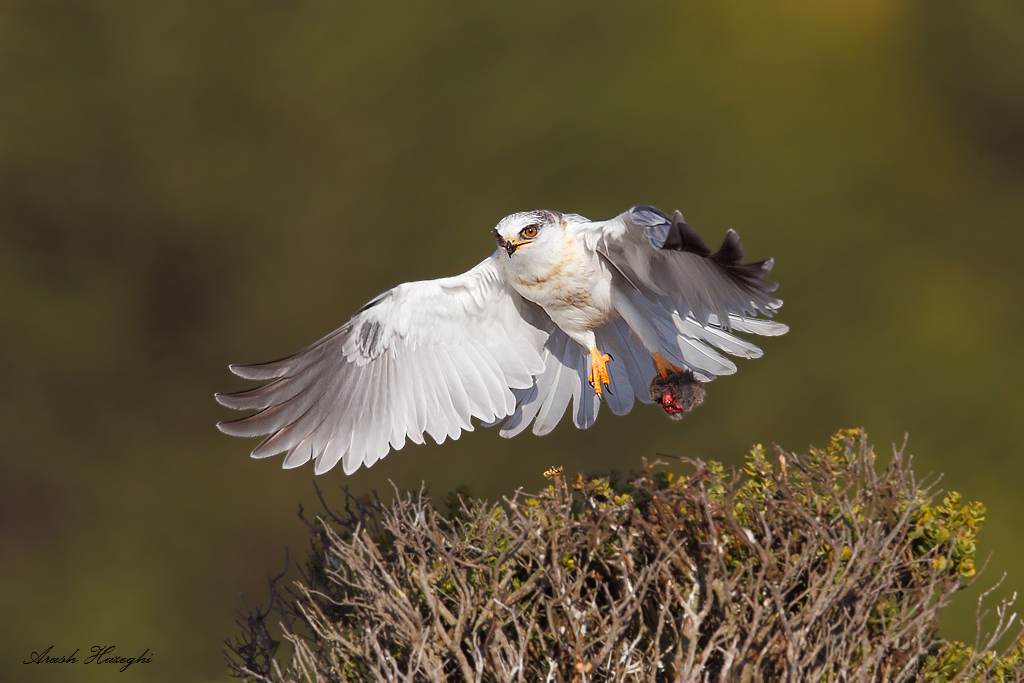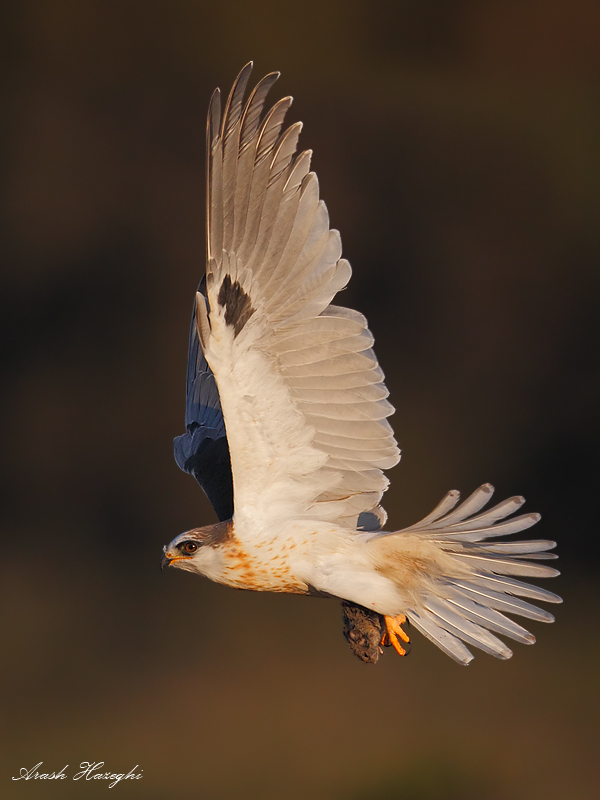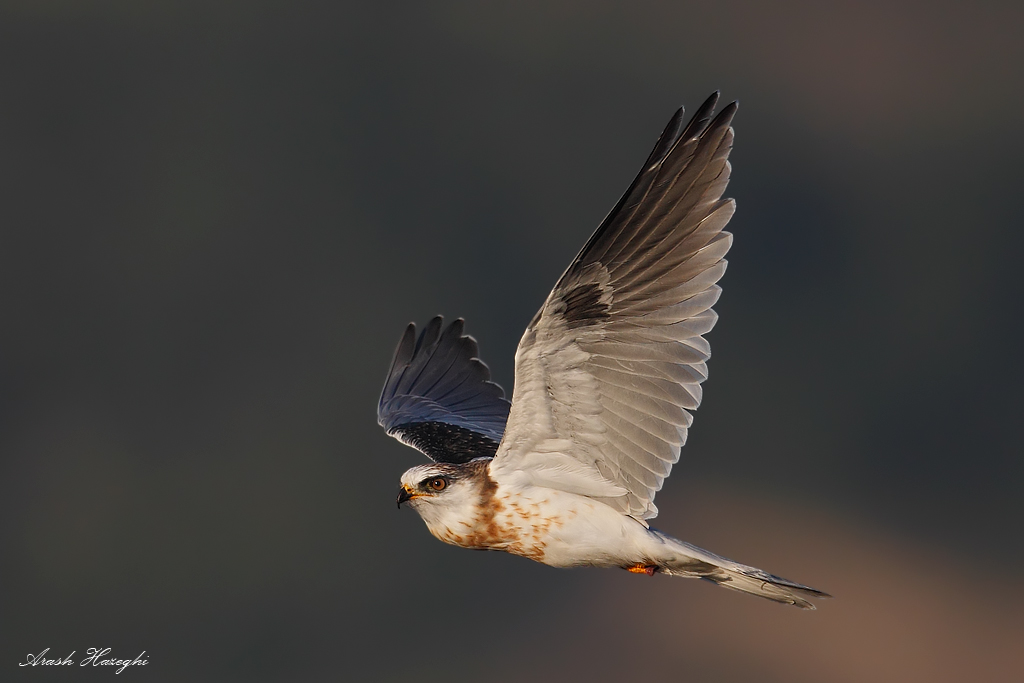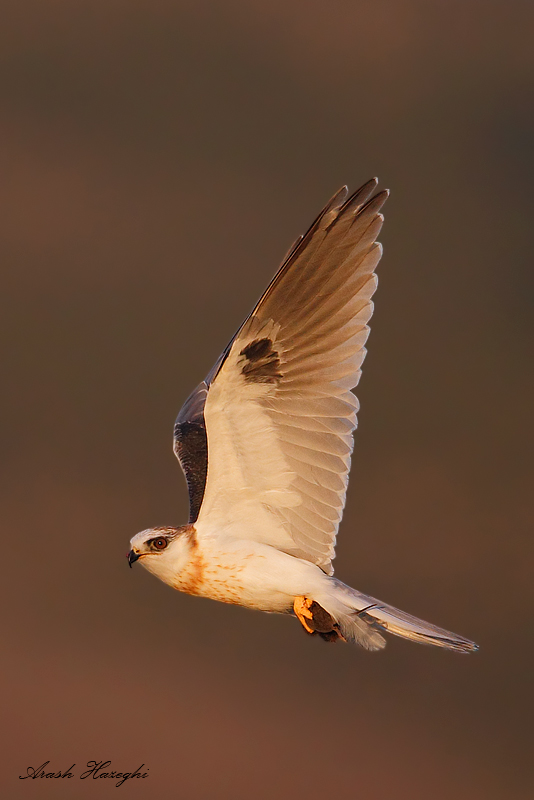EF 600mm f/4 IS II
New Features
The series II super-telephoto lenses offer two new features not found in the previous super-telephoto lenses, power focus and IS mode 3.
Power Focus : With this function the ultra-sonic servo motor (USM) in the lens can be manually controlled with the playback ring. To use this feature the focus-preset/focus mode select buttons need be set to OFF/PF positions respectively. Rotating the playback ring will command the servo to shift the focus elements. The servo can be operated in fast or slow modes depending on how far the playback ring is rotated. This feature is useful when recording movies so the focus can be shifted very smoothly. It is not of primary use for wildlife still photography.
IS mode 3 : In this mode image stabilizer engages only when the shutter is released. As soon as the shutter is half-pressed the lens CPU starts processing the data stream from the gyro-sensors, calculating the necessary correction but the floating element is not actuated until the shutter is fully pressed. As a result, IS operation has no effect on the image in the viewfinder. This mode is most useful for people who shoot off a tripod or a mono-pod and want to eliminate the image “float” effect in the finder. It can also save power. For handheld flight photography it is desired to have the finder image stabilized to help the photographer center and track the bird more accurately, so the best mode for IS is still mode 2 which compensates for any movement perpendicular to panning direction.
Field Test
In order to test the new lens to its limits I chose a challenging subject, White-tailed kite. This elegant raptor usually measures about 15″ and is extremely skittish and difficult to approach in the wild. Lack of a pattern in the chest and under wing areas, especially in adults which are covered by white and soft feathers makes it challenging to produce a sharp-looking image from this specie. Even the slightly soft images cannot be sharpened very effectively while the low contrast white feathers expose any chromatic aberrations. So overall you need all the sharpness the lens can deliver to produce a high quality kite image. The kites were photographed in the wild along the cost of California, without using a blind or bait to attract the birds. The field in which they hunt is several miles across and is covered with all kinds of tall needle grass, bushes etc. making it very difficult to navigate. Kites usually fly across the field and pick random perches so being mobile is vital for capturing action where it happens. A light-weight rig that can be pointed instantaneously at an arbitrary direction makes a significant difference, using a tripod is impractical. All the photographs in this review were made handheld.
The first thing I noticed in the field with the EF 600mm f/4L IS II, is how well-balanced it feels in my hands. Due to a better weight distribution, it actually “feels” lighter than the EF 500mm f/4L IS despite the latter being about 3 oz. lighter. I usually carry the lens by either wearing the strap around my neck or shouldering it for several hours in the field and the new lens feels more comfortable in that respect too. Swinging the lens to track erratic flight pattern is also easier given the better weight distribution. First example is a juvenile kite taking off with prey.

The kite take off was rapid, but the servo was able to keep up with the bird despite using a 1.4X extender. I used the far focus limit (16m-∞) to eliminate focus hunting. Overall the AF drive speed (focus acquisition) in AI-servo mode is very quick with EOS 1D MKIV and despite the increased magnification it feels faster than the EF 500mm f/4L IS with the 1.4X extender. Below is an example of another juvenile kite with prey, the AF locked quickly on the bird. Excellent performance rendering the white feather at wide open aperture with the EF 1.4X extender III. I don’t recall having seen a flight image from a white-tailed kite with this level of detail before in my files.

The AF tracking was equally great when background was farther away. The series II super-telephoto lenses have a wider focus ring. I handhold my lenses by grabbing the front of the barrel by the playback ring, I can now use my left thumb to rotate the focus ring while handholding. This is very handy if the focus accidentally locks on the background. There were a few instances where I was able to quickly rotate the focus ring to bring the focus plane towards the camera so the AF could re-lock on the bird before the action was over. I also observed solid AF tracking against dark backgrounds and in lower light, lower contrast situations.


Thanks for the review Ari. Amazing kite photos.
Wonderful Review and images Ari. Thank you
Your White-tailed kite series is just ASTOUNDING and would deserve a whole photo-book for itself! The 39 th just threw me off my chair!
A true GREAT series! Congrats!
Great review and awesome pictures!
Thanks for the review Ari.
Many thanks for the excellent review! I was on the fence about ordering this lens for BIF photography, but after seeing your results, I just went ahead and ordered it. I doubt if I’ll ever get images as good as your kite photos, but without this glass, there wouldn’t even be a chance.
Ditto on Chuck Murphy’s reply.
Hi Aria,
If I can not handle the 600mm there are any lenses that you can recommend. I will have the trip to Africa in this September. I have Cannon 7D and lenses 100-400mm cannon. I will take the picture of mammal and people. Which camera or lenses that you can recommend please.
Hello,
I recommend an EOS 1D series camera for best results. The 100-400 is a light lens, but its optics are not great. The new 300 f/2.8 IS II with extenders 1.4XIII and 2XIII is a better choice if you require professional quality photos.
Hi Ari,
Thanks for a great review, not to mention the fantastic pictures. As I’m thinking about getting this lens – first time to get a lens of this type, could you give some tips on how to inspect and test this lens (to make sure it is a good copy)? As other models in the Canon lens lineup often have varied quality control issues, I hope to know how to inspect a lens of this value to be confident it is of good quality.
-Jason
Hi Jason,
Thanks for your comments. Bad vs. good copy is mostly an internet myth in my view. I yet have to see a “lemon” lens after 8 years of using Canon gear. Most of the time, inexperienced users confuse their own error or bad technique with quality variation.
As long as you buy from an authorized Canon dealer you will be fine.
best
Ari
Hi Ari,
Thanks for the great review of the lens and for motivating me. Your photos are great!
I plan on getting this lens. I currently shoot 5D mk3 and 7D. Have you tried this lens with 1.4x on the 7D (is that too much… maybe for handheld the lever arm is too much) ?
Thanks again,
Ed
Thanks Ed,
yes, you can hand hold this lens with either 1.4X or 2X with no issues at all, I do it all the time. I only use with 1D bodies.
best
Great review. How hard is it to carry around the 600 iIS ii searching for birds? I am generally interested in small birds. Initially was looking at 500 IS ii, but I always have hard time on reach and think I should go with 600.
Hi Naren,
I dont’ find it difficult to carry the lens
Thanks for the reply Ari. How do you carry once you are in the field? Will you carry it on the tripod, or use a lens string or carry in a bag. I rented 600mm is ii last week and was carrying it in a bag(from lensrental) and it was hectic. Ultimately I could not find a bird that I can photograph!
Hi I don’t use a tripod, I just carry the lens attached to a black rapid II. I don’t use a bag in the field.
Hello Arash,
I need your advise again. Couple of years ago you advised me to purchase EF 100-400mm F4 II. That subsided the temptation of purchasing EF 600mm f/4 II for awhile. However, the price of EF 600mm went down recently, the new lens sales for $9.5 K now. Given that the version III of EF 600mm lens has been introduced as well as canon’s new RF mount, I would like to get your opinion whether I should further delay 600mm lens purchase or give into temptation and buy one. I don’t want to buy an expensive lens that may become obsolete soon. Any help would be appreciated.
Regards,
Amir
Hi Amir,
new lenses and cameras come out all the time, but we live in the moment. If we want to wait for the next big thing we would be waiting the rest of our lives and missing many opportunities. A lens isn’t an investment vehicle, it’s a tool to the job and any lens will become obsolete and worthless at some point. My recommendation is always to get the best gear you can afford for the goal you are trying to achieve
Best
Arash
Hi Ari,
I’ve just discovered your site and your photos are of a quality I strive to reach. Great images and I’m glad I found you.
I’m considering a couple of your guides. I have the 7D ii and am looking at your Pro Photographers Guide to Post Processing and the Canon DPP4 guide. You say Adobe Photoshop CS4 is required but I found two CS4 downloads. One is $275 and the other is for photographers and is $42. Which one? Could you also be more specific re: the Neat Image software. I’m on an HP desktop with Windows 7 Home Premium. I would appreciate a little more clarity so I get what I need the first time around.
Thank you in advance for your assistance and your expertise.
Steve
Hi Steve, thanks for your comments.Adobe Photoshop CS4 is the minimum you need, however CS4 is about 10 years old now and the new neat image plugin may not work with it. The latest Photoshop is photoshop CC and it is subscription based, i.e. $10 a month which is much better than buying obsolete software
hope this helps
Hello again Ari,
I looked at your site again and am just as blown away by your images as I was the first time I saw them.
I last wrote to you on Nov. 4th (above) and since then I picked up PSE 2020 and am wondering if this will work with DPP4 and Neat Image? I don’t really care to do the subscription thing if I can avoid it. Let me know if you think the PSE will work and I’ll order the guide.
Thank you once again,
Steve
Hi Steve
Thanks for your comments!
DPP4 is independent of Photoshop. Neat Image or any other plugin only work with the full version of Adobe PhotoShop. There is really not much you can do with Photshop elements as it lacks the sharpening and resizing algos used in the real software, if you are interested in professional quality images you need to get the full version.
best